Waters off Florida hit record high temps. Brace for fish kills, algae blooms, coral damage
The waters bordering Florida are running abnormally hot, alarming climate scientists about the potential for damaging ripple effects on the marine environment — from coral reef bleaching to coastal fish kills and algae blooms.
Now-viral maps from the University of Miami show record highs for this time of year just about everywhere off the coast — including the Atlantic Ocean, the Gulf of Mexico, Biscayne Bay and Florida Bay.
“Welcome to our new reality,” said Todd Crowl, director of Florida International University’s Institute of Environment. “Temperature is one thing we can’t control in the short term.”
Waters off the state’s southeastern coast are running about three and a half degrees higher than normal in Fahrenheit, with waters in the Florida Keys up a stunning seven degrees above average. That’s significant historically and hot enough that even people not in the business of monitoring marine temperatures are beginning to notice, with some visitors commenting about unpleasantly warm swims on social media.
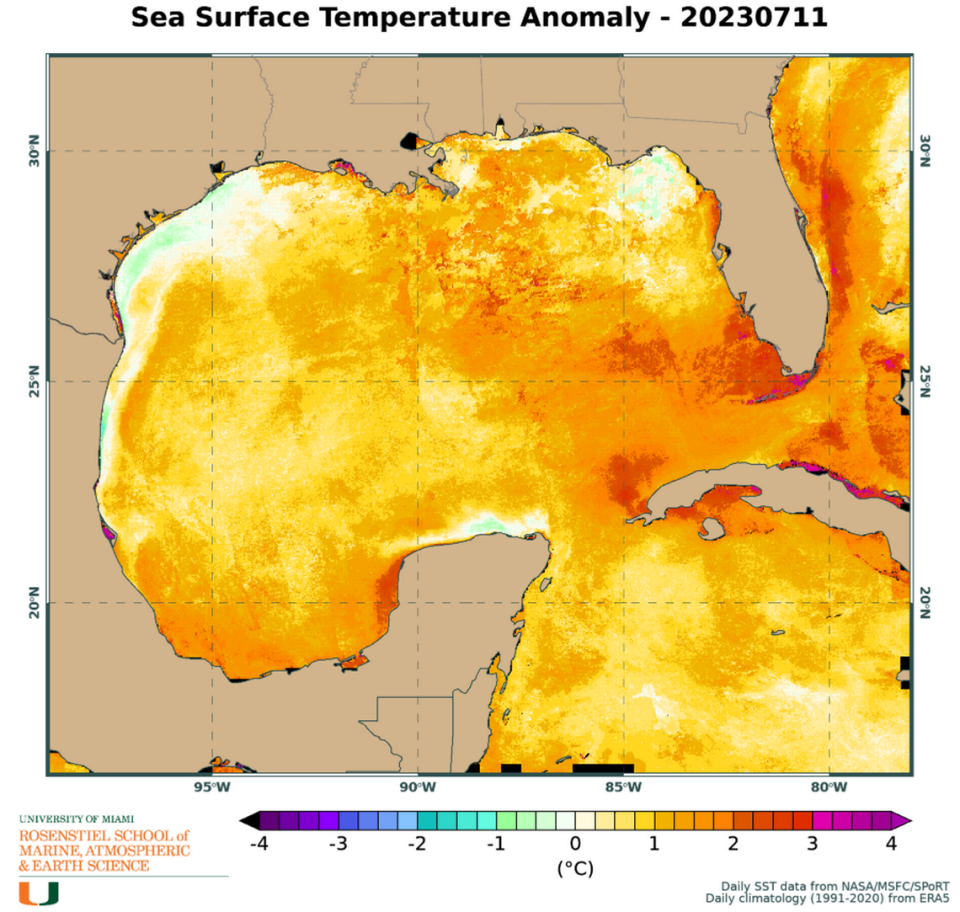
But the potential impacts are far more wide-reaching — soaring numbers can have dire consequences for state waterways battling algae blooms, coral bleaching and fish kills. It also may add powerful fuel to tropical systems that pass through coastal waters during hurricane season.
Climate change is already driving up air temperatures in Florida, triggering a string of extreme heat advisories in South Florida over the last month, raising public health concerns and driving up cooling costs for residents and businesses. Scientists are wary the rising water temperatures also may have wide impacts. Temperatures are now pointing attention to fish that may soon be starved for oxygen in steaming water and what could become sheets of pale white coral in the Keys.
READ MORE: Ocean and pool in Florida in ‘bathtub conditions.’ Is it safe to swim? What experts say
Fish kills could become more possible
In 2020, Crowl and his colleagues watched as Biscayne Bay, a shallow, once-rich lagoon that borders much of Miami-Dade, turned into a marine graveyard. It became the worst fish kill the bay has seen on record.
Hotter water raises the threat of a repeat disaster sometime in later in what is already a record hot summer. Combined with nutrient pollution and stormwater that pours into canal systems like the Little River, the super-hot waters can frequently trigger algae blooms that suck up oxygen needed to sustain seagrass, crabs and fish.
FIU is sending out scientists to see if the bay’s fish are making use of “thermal refuges,” which are small pockets of cooler water found in deeper areas, Crowl said.
While the heat isn’t past a point where it would spur a mass fish kill by itself, he said there’s an increased likelihood of die-offs when heat is mixed with runoff from storms.
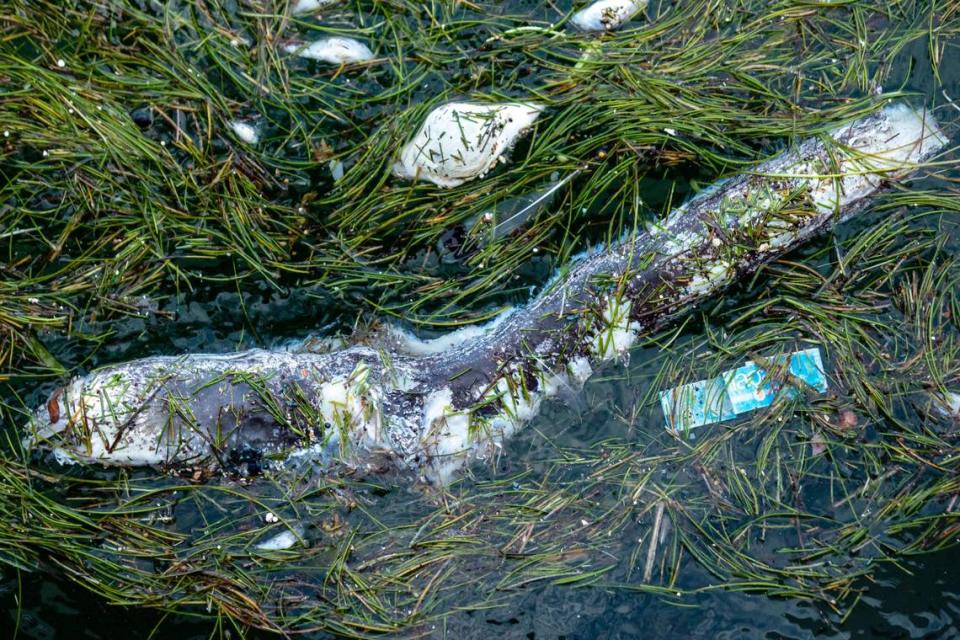
“If we were to get a big thunderstorm or rainfall event, which would then wash all those nutrients into the canal system and into the bay, that’s a recipe for disaster,” Crowl said. “We’re just keeping our fingers crossed.”
Pamela Sweeney, senior water scientist at Miami-Dade County’s Department of Regulatory and Economic Resources, said the latest sea surface temperature charts are concerning, and that leaders are looking at them, too.
Heat can bring about conditions that would cause a fish kill. But the county’s findings since the Biscayne Bay’s Task Force released 61 recommendations in 2020 have shown there’s no one combination of factors that will automatically trigger one.
“It’s not really any one thing,” Sweeney said. “That makes it tricky as scientists to try to pinpoint it, and to therefore try to predict and prevent it. But we are getting better at it.”
Florida’s ‘algae-prone future’
Over the past few years, much of the central part of the state has been plagued with toxic blue-green algae and red tide. Extreme heat encourages its growth, according to the Environment Protection Agency.
Near-shore waters in Miami-Dade and Broward have largely escaped impacts from both. Red tide has crept into the coastal waters of Everglades National Park on the Southwest coast and popped up in the Florida Keys — but has not produced the devastating fish kills that have hit the state from Naples north to the Tampa Bay area.
The rising temperatures also threaten another important water body — Lake Okeechobee, Florida’s largest lake.
Eve Samples, executive director of Friends of the Everglades, said nearly 440 square miles of the lake has been hit by an algae bloom as of Tuesday. That accounts for about 60% of it.
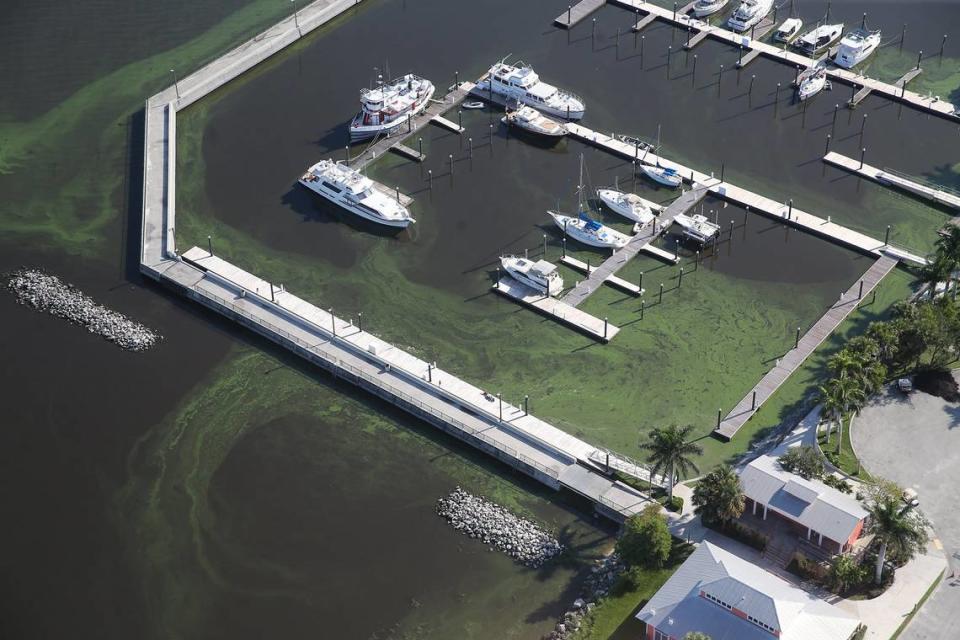
“As the temperature rises, organisms will be out-competed by organisms that love warm temperatures,” she said. “And blue green algae in particular love warm soup.”
It wasn’t immediately clear if Lake O’s water were also at record highs. But the group’s scientists agree it’s reasonable to assume the lake is heating up just as much as the ocean. And because water levels currently sit at 15 feet, Samples said the Army Corps of Engineers has warned it could open dams and have it spill out into the ocean if it gets much higher — pushing more of that blue-green algae down rivers to both coasts.
High water and more blooms on Lake Okeechobee spark worries about future algae woes
“We’re on pins and needles at this moment,” she said. “And these incredibly alarming sea surface temperatures and heat in general across Florida are making this matter much more dire.”
Possible hurricane impacts
The boiling waters could create some impacts on land as well — helping fire up tropical storms and hurricanes.
Despite El Niño — the global weather pattern emerging this summer that is normally linked to fewer Atlantic hurricanes — some forecasters are still calling for an active storm season. That’s a prediction largely due to the hot Atlantic and Gulf of Mexico.
The main development region of the Atlantic Ocean, so named because it’s the birthplace of most tropical storms and hurricanes, has seen record-breaking high temperatures this summer.
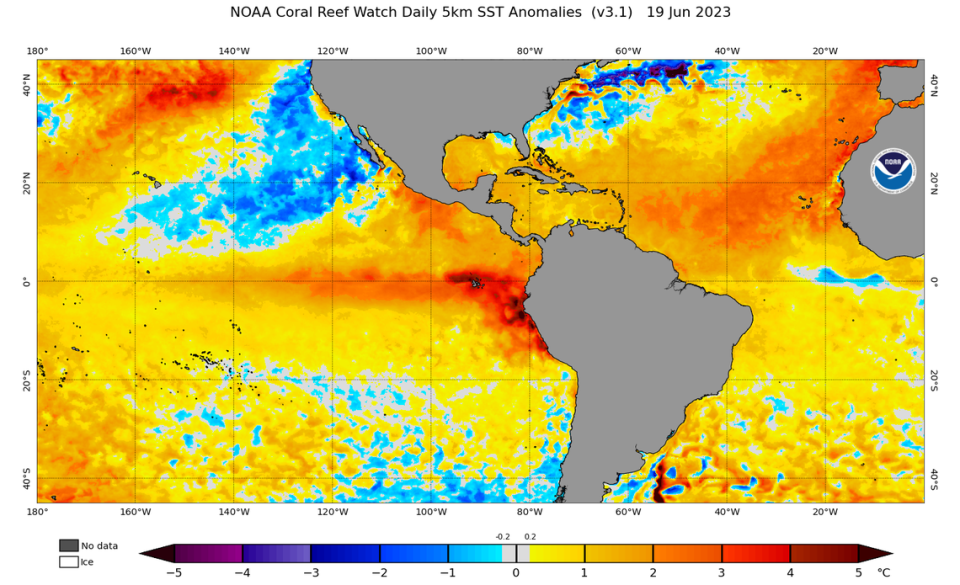
Hot water acts like fuel for a storm, allowing it to strengthen and organize. And although a strong El Niño could whip up enough storm-shredding wind shear to block those future storms from coming near the Caribbean and east coast, it’s not foolproof protection.
“We know that patterns often have breaks, and when there’s a break in the pattern there’s inevitably going to be a storm that breaks through,” said Jeff Berardelli, chief meteorologist for WFLA in Tampa Bay. “If you get a storm that breaks through, you’re really going to be worried about rapid intensification.”
‘The Atlantic is definitely on fire’: Unusually hot ocean sparks up early hurricane season
The increasingly hot Atlantic so worried meteorologists that Colorado State University recently upgraded its mid-season forecast to call for more storms and an above-average season.
Vulnerable coral reefs are victims of heat stress
And, if there’s a canary in the coal mines for Florida’s hot oceans, it’s the coral reefs that fringe the southeast coast and the Florida Keys.
When the ocean gets too warm, corals do something called bleaching, where they expel the algae living inside them, leaving bone-white skeletons that are weaker, sicker and close to death.
Last week, Joe Unsworth, a research associate at the University of Miami Rosenstiel School of Marine and Atmospheric Sciences, spotted an unusual — and depressing — sight. One of the elkhorn corals in the offshore nursery he helps tend was looking paler than usual, the warm orange-brown color more muted than its compatriots.
“It’s not something we usually see in a normal year, if there is a normal year happening anymore,” Unsworth said. “In a normal year, we see that start to happen around August.”
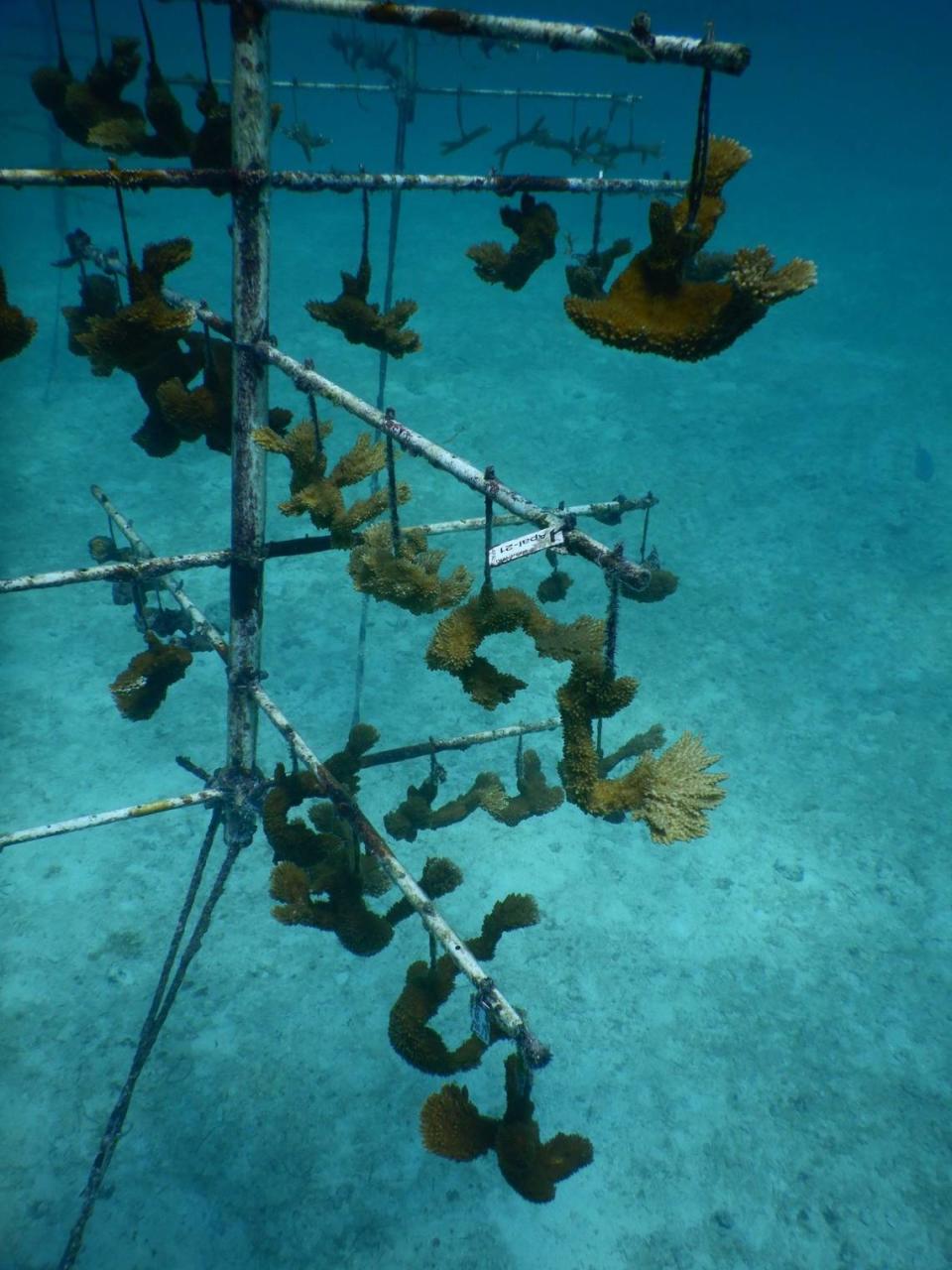
The paling coral is likely a sign that bleaching is imminent, a consensus the National Oceanic and Atmospheric Administration’s official coral reef watch echoes. The satellite-based mapping and prediction service calls for a 90% chance of coral bleaching occurring in the Caribbean in the next four months, with the biggest damage near Florida likely in August and September.
For corals, one or two hot days aren’t enough to cause damage. But high heat that holds steady for weeks on end? That’s a problem.
Scientists want to rescue reefs and protect Miami with tougher breeds of staghorn coral
Hot water for a month straight puts corals on NOAA’s alert level one, which indicates significant bleaching is likely. At eight weeks, it hits level two, which means severe bleaching and significant mortality is likely.
NOAA’s predictions for next week have the Florida Keys and Florida Bay at alert level one, a sign that coral bleaching could start damaging the reef tract. That has Unsworth nervous about the fate of his nursery, one of multiple academic and privately operated coral-growing nurseries across Florida.
“It’s tough,” he said. “You’re not going to be able to put a bunch of ice packs around the nursery and see if it cools off.”
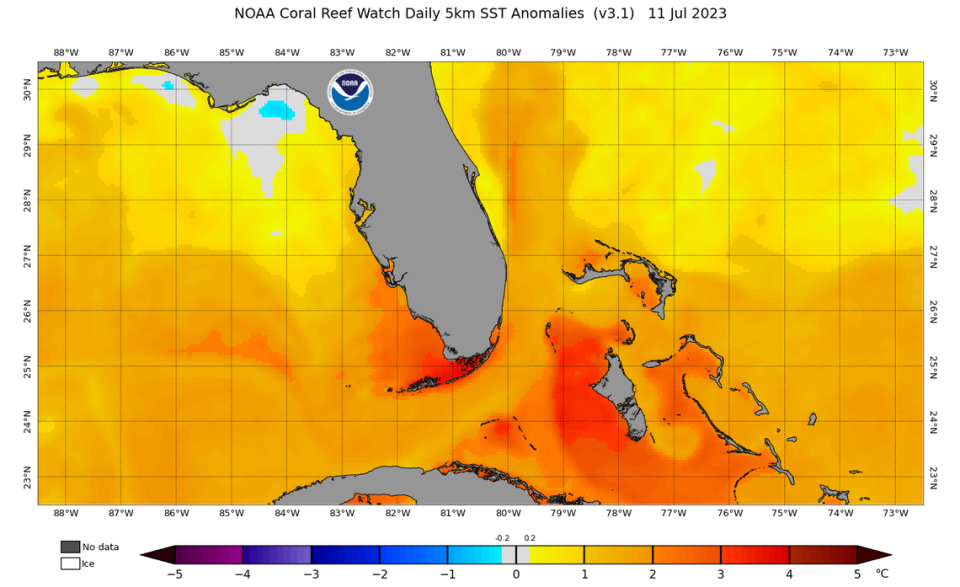
However, Unsworth said his team is considering employing a strategy others across Florida use — lowering the metal trees that hold the growing coral fragments into a deeper, and cooler, level of the ocean.
“There are other groups in Florida that do this every year, but we’ve never had the need to do it,” he said. “We’re most likely going to do that in the next few weeks.”
Is there any hope of relief?
In the longer term, the only other natural fix would be if a tropical storm or hurricane came through and churned up the water, cooling it down. Strong storms can hit the reset button for corals, giving them a few more weeks of reprieve before temperatures climb again.
But Berardelli, the meteorologist, said the global models don’t seem to be in the corals’ favor.
“We’re already in unprecedented territory in the Florida Keys, and if we don’t get a change in the pattern in the next two weeks, we’re in trouble,” he said. “I don’t see anything at least for the next week and a half, two weeks to make me believe the pattern across Florida is going to change.”
July 4th broke world heat record. So far, it’s Miami’s hottest year and a sign of the future
Rachel Silverstein, Miami Waterkeeper’s executive director, said it’s important to make all of Florida’s ecosystems — coral reefs included — more resilient in the face of global warming.
And that responsibility is a shared one, she said, as the county and Miami Waterkeeper offer ways to report pollution and fish kills, namely through its website or the Bay Watch initiative.
“When ecosystems are pushed to the brink, additional stress like high temperatures push them over the edge,” Silverstein said. “We have to eliminate pollution, or at least reduce it significantly.”

